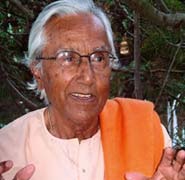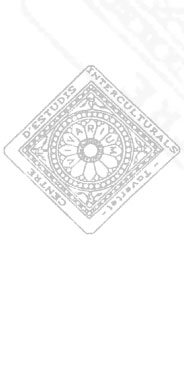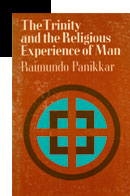

el sitio oficial


The Trinity and the Religious Experience of Man
This is one of Panikkar’s most original and best received works. Because of its brevity and lack of scientific framework - Panikkar himself says in the Introduction that he had vacillated between publishing these “brief notes” or developing them into “a more extensive volume” – this may appear to be a minor work, but such is not the case. This is Panikkar’s fundamental book on the Trinity, in which he traces his original Trinitarian inter-religious conception beyond that of the Christian conception (hence the title).
In the Prolog to the 1973 English edition (Santa Barbara, California, 1973), the author speaks about how the original manuscript was written in French in 1963 in a little temple on the banks of the Ganges, and then was translated into the 1970 English edition that is the first known to us as: The Trinity and World Religions. Icon, Person, Mystery, Bangalore- Madras, 1970. Three years later a revised and amplified edition came out with the new title: The Trinity and the Religious Experience of Man. Icon, Person, Mystery (London 1973), and years later it would appear in Spanish, Catalan, Italian, German, Czech, Portuguese and French editions.
The Prolog to the 1989 Spanish edition begins with an expressive quote from the Upanishads that manifests a fundamental thesis of the book, the Trinity, although it may have originated in Christianity, it is not an exclusively Christian event. “It revealed itself to itself in a trinitarian manner.” It even indicates that the text rose up from “a situation of dialogue with the vedantic world. This is why he insists that the Christian faith should "stay free in order to carry out a fecundation that will affect all religions." “This essay attempts to deepen in the Christian mystery and encounters an astonishing confluence between the traditional world of the religions and the secular one of modernity. A fruitful dialogue is possible at this depth.”
The Trinity is “the culmination of a truth that penetrates all of the realms of Being and consciousness, and this vision unites us with all of human kind,” is a type of cultural and human “invariant”, and is one of the most profound and most universal visions that Man can hold of himself and of God, of the Creation and of the Creator. It links the immanent mystery with the economic (ad extra) God, in which the destiny of the entire world is in play. Beyond the immanent Trinity and the Christian economic Trinity (that Panikkar does not forget and fully develops the dimension of Father, Son and Holy Spirit), it is necessary to arrive at the radical Trinity. This experience of the radical Trinity is the fruit of the theanthropocosmic-cosmotheandric experience, a fundamental theme of Panikkar’s theology.
The section “Forms of Spirituality” is supremely interesting and very enriching: Iconolatry-Karmamârga (action), Personalismo-Bhaktimârga (love), Advaita-Jñânamârga (knowledge).
Finally, two words on Advaita and Trinity. Advaita (non-dualism, that Panikkar prefers to translate as “a-dualism”) is fundamental for comprehending Panikkarian trinitiarian thought. Advaita manifests the a-dual character of the Real; the Absolute is “at once transcendent and immanent, all in one.” For advaita, the Divinity is not separate from the rest of Reality, nor is it totally identical with it, as is the case with dualism and monism, but rather is harmoniously integrated in that reality, as a dimension of it, even if its source, as with the Father in the Christian Trinity, is immeasurably profound.
translation from Spanish
